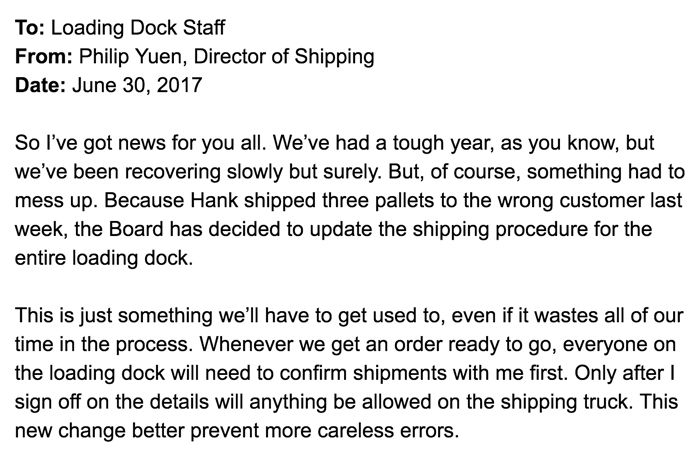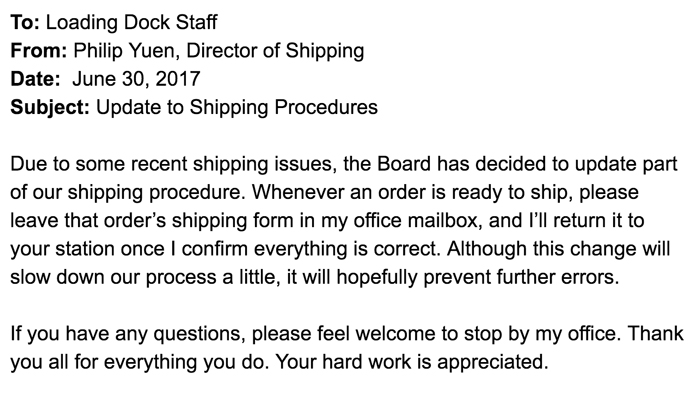Business Communication -
How to Write a Clear Business Memo

Business Communication
How to Write a Clear Business Memo


/en/business-communication/how-to-write-an-effective-business-email/content/

When you need to update your colleagues on important information or make an announcement at your workplace, a business memo can be an ideal way to address a specific audience in a formal context.
Watch the video below to learn how to write a business memo.
While business memos and emails may look similar at first, a memo has some key differences. Memos are usually more formal than emails and are often used when you need to give your message a more official look. They can also be printed and distributed wherever this message would have the most impact.
Memos can be addressed to a single person or a group, so tailor your message to reflect the concerns of your audience. As with any business document, always remain professional and polite, even if you have to address a negative topic. An official memo is no place to single someone out in a critical way, so focus on facts and constructive plans for the future.
Business memos usually begin with a header section that lists recipients and other details in the following format:
Most business memos skip the greeting (such as “Greetings, Ms. Lawson”) and immediately go into the body text. Whenever you start a paragraph in a memo, always put the main point of that paragraph first, as this makes your writing direct and easy to follow.
Generally, memos don’t include a farewell (such as “Sincerely, Tonya”), but it may be appropriate depending on your message or your company’s style. If you do include a farewell, make it brief.
As discussed in the Business Writing Essentials lesson, revision is vital for any quality document. Read over your writing to cut unnecessary material, clarify your main points, and proofread for grammar and factual errors. And before you submit your memo to your audience, consider getting feedback from a colleague to ensure your message is effective and professional.
Let’s explore a few business memos to see this lesson in action. We'll start with an example of a poorly written memo.

The example above is not acceptable. The body is unclear and rambling, there’s no subject line, and the main point of each paragraph is difficult to find. The message itself is also incredibly unprofessional, especially because it calls out a single person in a negative way.
Now let’s look at a stronger example.

This is much better! The body is concise and clear, and the main point is the first sentence in each paragraph. There’s also a strong subject line, and the message stays professional despite sharing negative news.
Whether you’re detailing a new policy change or updating staff on a new procedure, business memos are a powerful way to distribute information among your colleagues. As you practice and study, your memos will become more efficient and polished.
/en/business-communication/how-to-format-a-business-document/content/